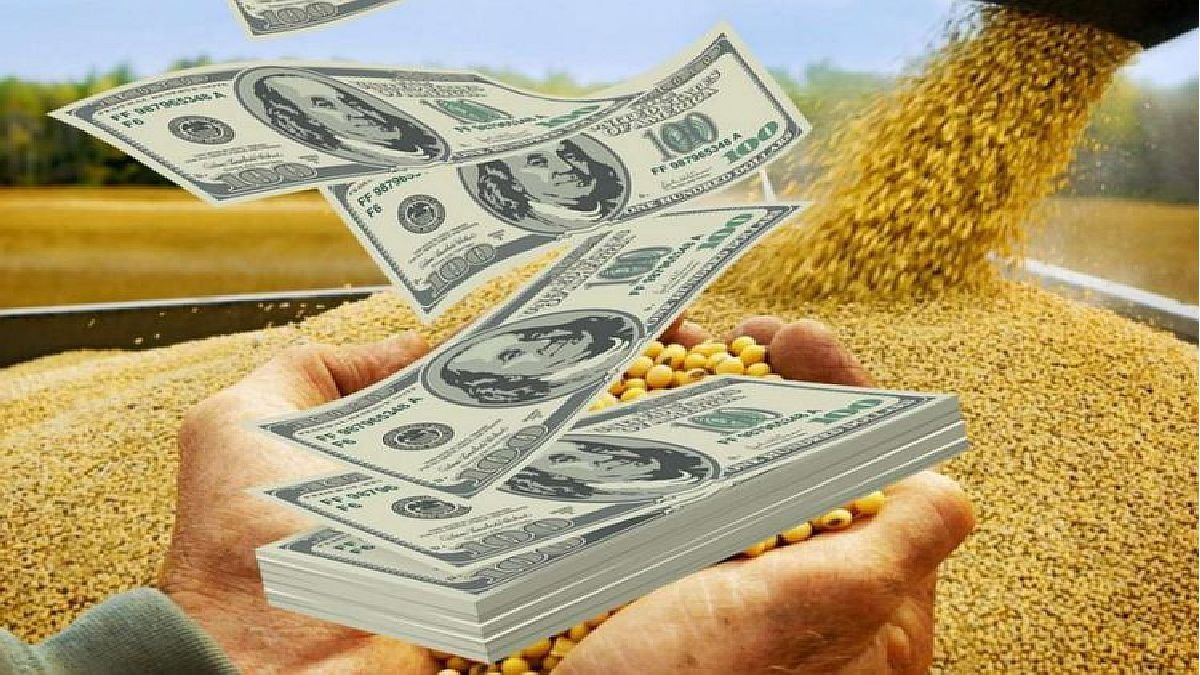The increase of the dollar blend, driven by the rise in cash settlement (CCL)is not yet reflected in a significant increase in harvest liquidation.
Since mid-May, when pressure on the exchange rate began to intensify, the CCL has increased by $288. Due to the composition of the dollar blendwhich consists of 20% cash settlement and 80% official dollar, has also registered considerable increases. Thus, the blended dollar went from $926 on that date to $1,009 on Wednesday.
On the many occasions in which he has had to ratify the economic direction of the Government in recent months, the Minister of Economy, Luis Caputo, He denied an imminent mega-devaluation, assured that a new agreement with the International Monetary Fund (IMF) is not yet in place and ratified the continuity of the “dollar blend” at 80/20, as well as the continuity of the crawling peg at 2%.
This led to questions, for example, of Domingo Cavallo and Fausto Spotornowho recently left the honorary Council of Advisors of President Javier Milei. According to the Chamber of the Oil Industry and the Center of Cereal Exporters (CIARA-CEC), There are still 34.954 million tons of soybeans left to sell, which means that 73% of the production has not been marketed.
This percentage is significantly higher than those recorded in 2023 (57%), 2022 (56%), 2021 (51%) and 2020 (48%). As for corn, unsold tons amount to 7.238 billion, reflecting the lowest percentage of unmarketed grain in the last five years, which raises the question of what is it that does not convince producers.
For some analysts, the liquidation scenario may worsen due to international pressures on raw material priceswhich are 21% below those recorded in 2023. These experts emphasize that the real appreciation of the exchange rate is the factor that “most worries inside and outside the Government.”
dollar-soybean.jpg
The increase in the blended dollar, driven by the rise in the cash settlement (CCL), has not yet been reflected in a significant increase in the settlement of the harvest.
Depositphotos
After the December devaluation, the real exchange rate is close to pre-devaluation levels and is even lower than in August, when the IMF forced a 30% adjustment. They estimate that the exchange rate today would be $1,150.
In addition, the market believes that, along with inflation, This has represented a loss of competitiveness in the Argentine economy, which has been aggravated by the fall in international prices. They consider that the Argentine producer receives today 42% less in real terms than what he received in November 2023.
As far as the CCL goes, Instead of improving the attractiveness of the blended dollar, it increases pressure on expectations by pushing up the exchange rate gap. So far this year, the CCL has increased by 42%, while inflation has risen by 71.8% until May, the latest available data. Meanwhile, the exchange rate gap is above 50%.
So what are producers waiting for?
There is a high level of uncertainty in the market.Producers who have not yet sold their crop will probably not do so just because the CCL goes up a little.especially if the exchange rate gap remains high or widening, as this reduces the incentive to sell.
However, some producers are expected to continue selling to cover financial needs and for production, although notor large sales are anticipated. Although the impact of the CCL is limited, the main criticism is focused on the crawling peg at 2%, with expectations of exchange rate unification and the elimination of the cepo in 2024, which could lead the dollar to converge between the current $1000 and the CCL at $1400.
Source: Ambito
I am a 24-year-old writer and journalist who has been working in the news industry for the past two years. I write primarily about market news, so if you’re looking for insights into what’s going on in the stock market or economic indicators, you’ve come to the right place. I also dabble in writing articles on lifestyle trends and pop culture news.




